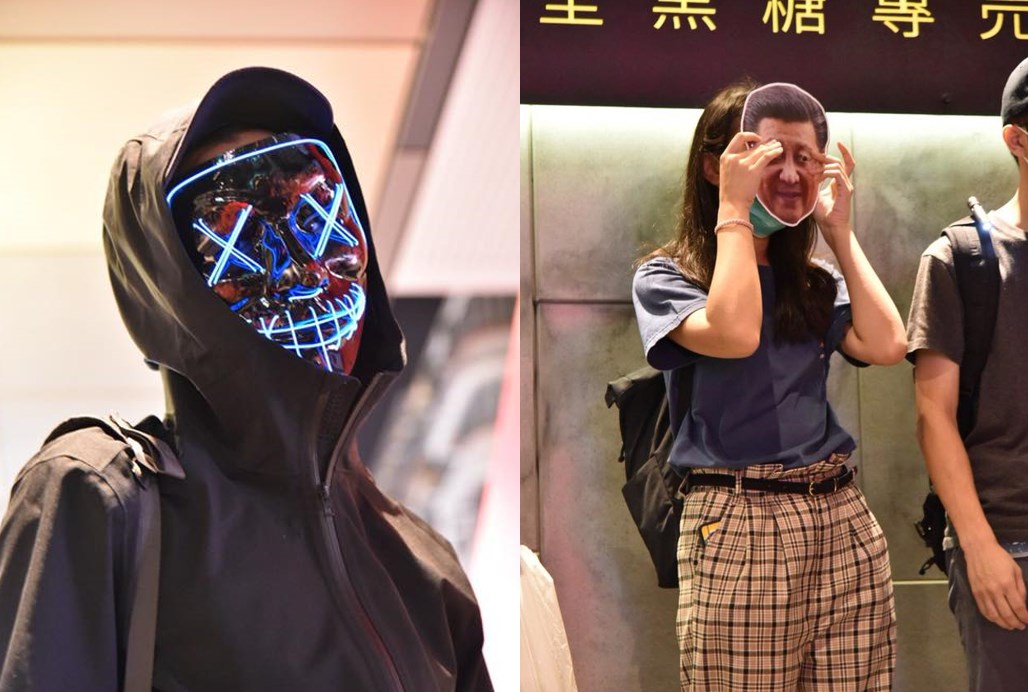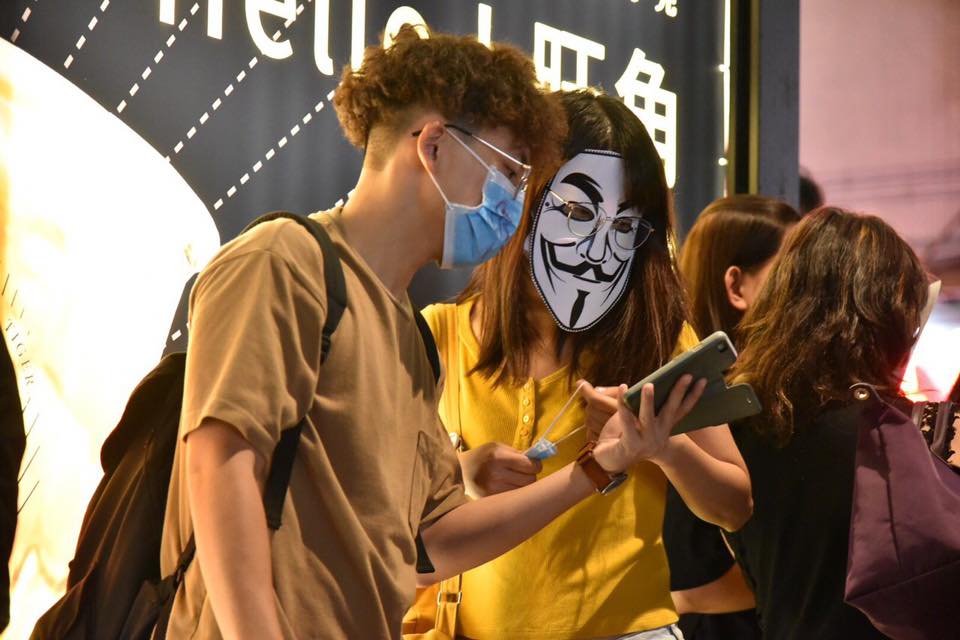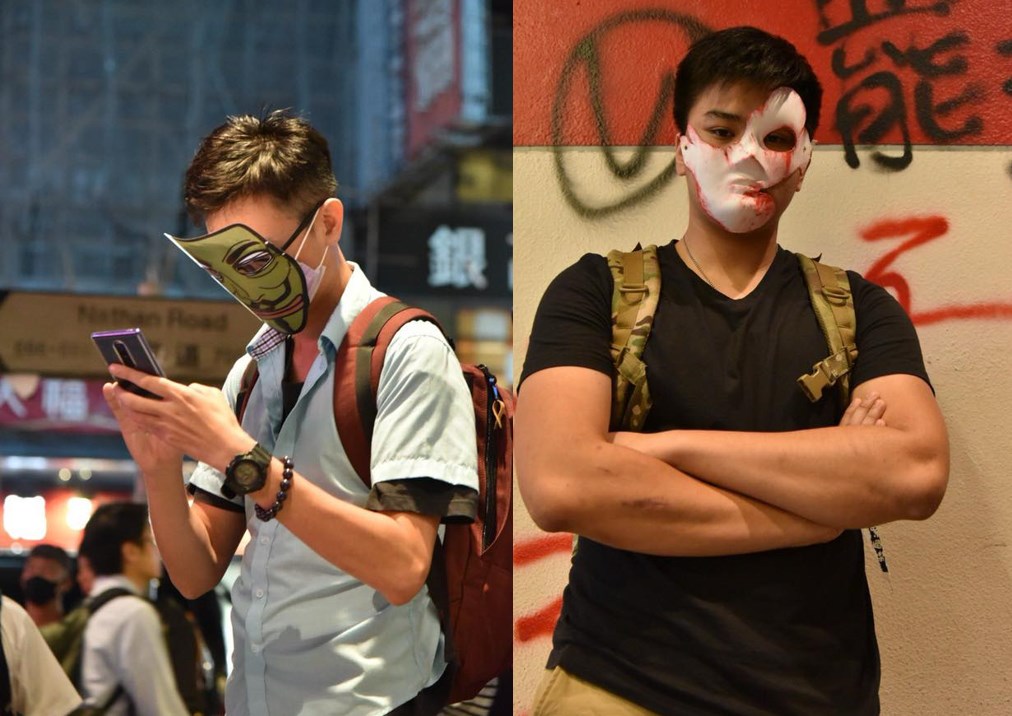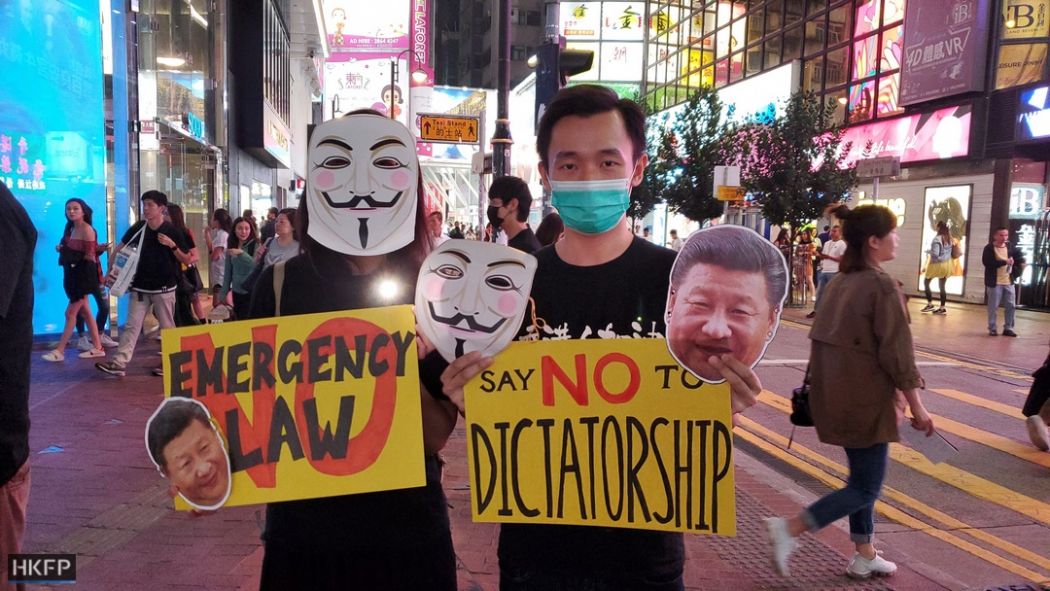From popular protest icon Pepe the Frog to theatrical depictions of Guy Fawkes, hundreds donned masks across Hong Kong on Friday in defiance of an emergency law prohibiting them from concealing their faces at protests.

At around 7pm, crowds began to form human chains across the city in areas such as Tsuen Wan, Sha Tin, Tai Wai, Causeway Bay, and other districts, chanting protest slogans including “Five demands, not one less.”

Though the ill-fated extradition bill is to be axed, demonstrators are still demanding a fully independent probe into police behaviour, amnesty for those arrested, universal suffrage and a halt to the characterisation of protests as “riots.”

Some organisers distributed ready-made masks to participants on the scene, including ones depicting Chinese President Xi Jinping and character Winnie the Pooh – an image often censored online in China after some noted an apparent resemblance to President Xi Jinping.
The scene was similar to that of the “Hong Kong Way” – an attempt in August to recreate the 1989 Baltic Way in a display of solidarity among protesters and to raise the international profile of the movement.

On October 4, Chief Executive Carrie Lam invoked the colonial-era Emergency Regulations Ordinance to ban the use of face-covering at protests. The move sparked a backlash and gave new momentum to the pro-democracy movement as it entered its 19th week.

In Causeway Bay, Ms Lau held a placard reading “Though we look different we are all Hongkongers!” She told HKFP that she was driven to do create the sign after hearing about potential retaliation against ethnic minorities after an attack on the convenor of the Civil Human Rights Front Jimmy Sham on Tuesday. It was reported that the assailants were men of South Asian descent.
“In times like these, there’s a tendency to make people seem like, the other, like ethnic minorities,” she said. “I feel like everyone who loves Hong Kong is a Hongkonger, so I just want to say that to them, because I don’t want people to be forgotten in this movement… all of them matter.”
She added that – unlike in mass marches – the format of a human chain enabled participants to interact with the public and each other more.
The masked human chain in Tsim Sha Tsui on Nathan Road.
Photo: HKFP. #hongkong #hongkongprotests #antiELAB pic.twitter.com/qRu07sIUsk
— Hong Kong Free Press (@HongKongFP) October 18, 2019
Charles, a 25-year-old freelance photographer and videographer, told HKFP he was concerned the government would enact more emergency laws but that he was determined to continue to practice his freedom of expression.
“We’re all afraid but we still have to stand up,” he said. “We think [the protests] might end up turning into something like Ukraine or Ireland. It’s a tragedy for Hong Kong and even the whole world. But we choose to fight for freedoms.”

Joshua, a 19-year-old student bearing a US flag, told HKFP he wanted to express his gratitude to the country for its ongoing support. He also said he hoped Washington will pass the Hong Kong Human Rights Act – a proposed law that would punish those it deemed responsible for suppressing freedoms in the city. The US House of Representatives passed the bill on Tuesday, after which it will move to a similar vote in the Senate as soon as next week.
“I took this flag out to show we are thankful for [the Americans],” he said. “If this [bill] goes through it would help us a lot. We won’t be fighting this alone.”
Hong Kong Free Press relies on direct reader support. Help safeguard independent journalism and press freedom as we invest more in freelancers, overtime, safety gear & insurance during this summer’s protests. 10 ways to support us.

